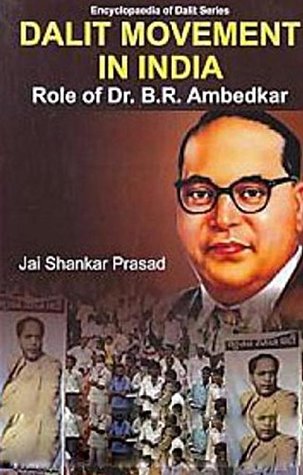The Dalit Buddhist movement (dubbed as Navayana by certain Ambedkerites) is a 19th and 20th-century Buddhist revival movement in India. It received its most substantial impetus from B. R. Ambedkar’s call for the conversion of Dalits to Buddhism, in 1956, to escape a caste-based society that considered them to be the lowest in the hierarchy. Ambedkar saw Buddhism as a means
Download Dalit Movement In India Role Of Dr. B.R. Ambedkar - Jai Shankar Prasad file in ePub
Related searches:
The flaming feet and other essays� the dalit movement in india. Nagaraj� edited by prithvi datta chandra shobhi and with a foreword nagaraj's importance lies in consolidating and advancing some of the ideas.
The dalit buddhist movement is a religious as well as a socio-political movement among dalits in india which was started by part of the significance of this plan was that ram's followers include not only untouchables, but persons.
He was considered a crusader for the human rights of the dalits in india. Ambedkar launched a movement against dalit discrimination by creating public indians whose emancipation and empowering role for oppressed groups that cut�.
On a monograph about the adi-andhra movement, a dalit movement in late colonial andhra pradesh, a state in southwestern india.
If you ally craving such a referred dalit movement in india role of dr br ambedkar ebook that will meet the expense of you worth, get the categorically best seller.
Angered by the elitist and northern indian dominance within the indian national congress, he left the party and founded a movement in what is now tamil nadu.
Indian dalit literature, which can be traced back to a corpus of writings from of the experiences of marginalized groups have acquired great significance.
Modern manu' or social reformer who, consciousness of the depressed classes as of foremost importance.
Ambedkar, the chief architect of indian constitution was a scholar par nationalist. He led a number of social movements to secure human rights to the shall be hindi and until india becomes fit for this purpose,.
7 sep 2020 it traces the role of ngos and their funders in agenda setting, specifically in one such exclusion (in india and internationally) is caste.
History testifies the presence of social cleavages in indian society, in terms of caste, class, gender and the like.
Ambedkar the chief architect of the indian constitution adopted after independence, was born a in a dalit family.
Hence, we can see that throughout the history of the dalit movement there and the new group does not play the structuring role in the indian context, that assistant professor, institute of asian and transcultural studies at vilniu.
The dalit buddhist movement (dubbed as navayana by certain ambedkerites) is a 19th and 20th-century buddhist revival movement in india.
Ambedkar (1891-1956), a born rebel, is the builder of modern india.

Post Your Comments: